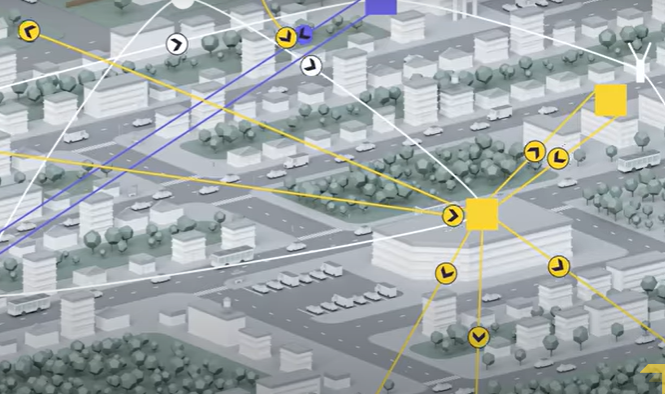If you live in a city where there is no drone package delivery service, don't worry, we are coming.
But let's say you're in Australia and you're a Loganian or a Loganite or you know, the ones who live in Logan City. So you wake up one morning and you don't feel like making breakfast. So you open your Wing Drone Delivery mobile app and buy breakfast. You choose the option that includes coffee and muffins. After 15 minutes you go out to the patio of your house and a VTOL drone with 14 propellers has just reached 150 feet high and begins to descend. Meanwhile you take photos of the drone to share on Instagram and be the envy of your friends, who have to prepare breakfast.
When the drone drops to 20 ft, a basket begins to descend to the ground and releases your breakfast. The drone's journey took 10 minutes from Wing HQ to your house, so the coffee and muffins are still hot. Then the basket goes up its leash to the drone and returns to the headquarters for its new order (the neighbor saw you and also wants his breakfast by drone).
This is normal in Logan City, in fact, you can also order medicines, hardware items, and other good things to eat. In fact, the Wing company has delivered more than 200,000 packages in the cities where it is operating (Canberra, Helsinki and Christiansburg, among others). 200,000 parcels is an incredible number, and they only had a problem once, when an Australian crow rebelled against this new technology of air delivery. But that is another story.
By the way, the Wing company is part of Alphabet, or in simple words, Wing is from Google. But Wing isn't the biggest drone package delivery company. The largest is called Zipline, which has completed more than 500,000 drone package deliveries, without incident or crows.
But there is a problem.
With this last-mile package delivery system, products are loaded at Point A and dropped off at Point B (your backyard). The drone then returns to Point A and prepares for its next delivery (the envious neighbor). This creates a restriction, and that is that businesses that want to use this air delivery service must have their products at the operations center from where the drones take off (Point A), which poses a logistical challenge. All is well, when it comes to making hundreds of thousands of deliveries a year and few businesses use this delivery system.
But what happens if we want to scale to millions and millions of deliveries per year and have many businesses join?
It turns out that the Point A to Point B system might not be enough. The good news is that Wing already has a proposal, and just announced it 3 weeks ago. The proposal is called “The Wing Delivery Network.” It is a delivery setup, with locations distributed in various parts of the city, where drones can do 3 things: pick up packages, deliver packages and recharge their batteries. Let's see what it consists of.
The Wing Delivery Network
There is no need for the employee to wait for the drone to arrive, and the rest of the system works automatically. Therefore, this distributed network is made up of platforms where drones recharge their batteries and AutoLoaders, where drones pick up packages from restaurants or eCommerce companies. This distributed network is Wing's proposal to scale to millions of package deliveries using drones, where thousands of businesses can be added and where the paradigm from Point A to Point B is broken. And the amazing thing is that Wing plans to implement its first network in 12 months!
They estimate that by mid-2024, they will already be able to handle millions of automated deliveries for small packages, at a lower cost than ground delivery and faster.
This is how they make you want to be from Canberrense or Loganita or Helsinguino.
About the author: Cecil Acevedo is an Electronic Civil Engineer at Dronity.




.png.small.400x400.png)











Comments